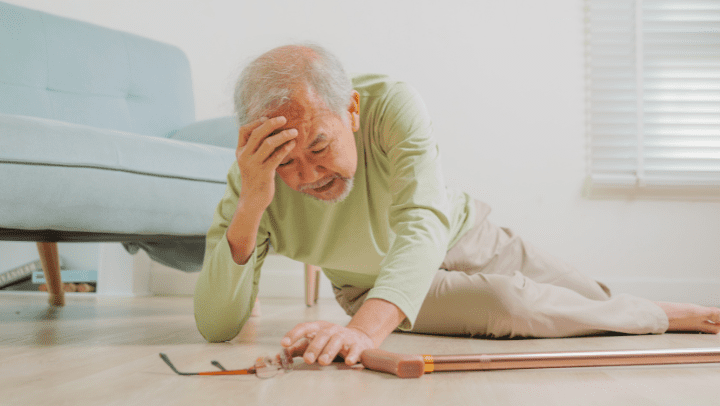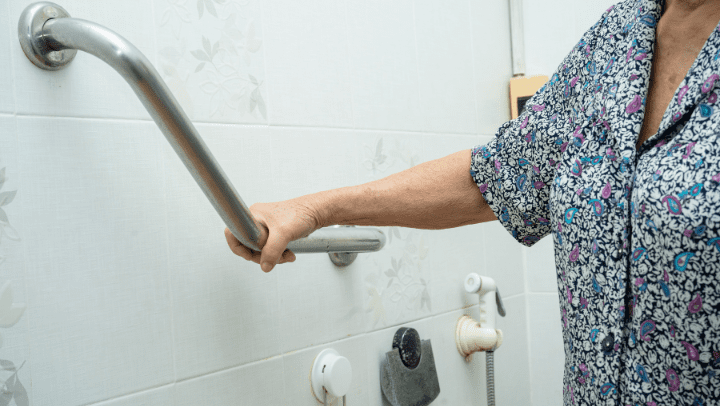
Falls affect one in four older Americans yearly. These incidents rank as the main cause of injuries among people aged 65 and older. Your loved one’s safety and well-being become vital concerns when considering assisted living services in Wisconsin.
Most older adults – more than 80% – live with at least one chronic condition. Conditions like diabetes, stroke or arthritis can increase their fall risk by a lot. Serious injuries often result from these falls, including hip fractures, broken bones and head injuries. The encouraging news shows many falls can be prevented with proper care and support. This piece will help you protect your loved one by understanding fall risks and creating safer environments. You’ll learn practical prevention strategies that work.
Understanding Fall Risks in Older Adults
Your loved one’s aging process brings unique challenges to their mobility and balance, making fall risks a vital concern. Falls can happen to anyone, but people over 65 face higher risks. More than 14 million older adults report falls each year.
Age-related physical changes increase the chances of falling by a lot. Muscle weakness makes it harder to keep balance steady. Poor vision adds to these challenges. Many older adults struggle to judge distances and adapt to different lighting conditions, which makes it hard to spot hazards in their path.
Medication management is a vital part of preventing falls. Taking more than four medications at once raises fall risks. The most concerning medications are:
- Psychoactive medications (antidepressants, anti-anxiety drugs)
- Sedatives and sleep medications
- Blood pressure medications
- Pain relievers
Medical conditions raise fall risks by a lot too. People with arthritis are 2.5 times more likely to fall or get hurt from falls compared to others. On top of that, health issues like heart disease, diabetes and memory problems can throw off balance and coordination.
The risk of falling goes up when multiple factors come into play. Each extra risk factor doubles the chance of falling within a year. Here are some key risk factors:
- Previous history of falls
- Balance problems
- Weak muscles
- Vision issues
- Chronic pain
- Depression
- Age over 80 years
Regular checks of medications and vision, combined with supervised physical activity, can lower fall risks by a lot. Understanding these factors helps create prevention strategies that work best for your loved one’s needs.
Creating a Safe Home Environment
A safe living space serves as the lifeblood of fall prevention for older adults. Studies show that most falls happen at home, but proper modifications can reduce falls by up to 39% among high-risk individuals.
Good lighting is a vital factor to prevent falls. Research shows that each 10-fold increase in room lighting leads to 35% fewer falls in that area. Bright, non-glare lightbulbs should be installed throughout the house, particularly in hallways, bedrooms and stairways. Motion-sensor lights work great by automatically lighting paths during nighttime bathroom visits.
Bathroom modifications are crucial since bathrooms see many accidents. Here are the vital safety measures needed:
- Install grab bars near toilets and in shower areas
- Use non-slip mats in tubs and shower floors
- Add a shower chair or transfer bench
- Make sure there’s good lighting with night lights
- Keep toiletries within easy reach
Studies show that visual-cue lighting around doorframes reduces nighttime falls by more than 30%. These amber-colored LED systems serve as important orientation points, especially in darkness.
Supporting Independence While Ensuring Safety
Quality of life for older adults depends on their independence, yet falls present a most important threat to this freedom. Each year, falls rank among the top reasons seniors lose their independence and more than 3 million older adults need emergency room treatment for fall-related injuries. Many older adults avoid activities they once enjoyed because they fear falling. All the same, wisdom rather than weakness drives the decision to ask for help.
Physical activity is a powerful tool for staying independent. Studies show that combining strength and balance programs with regular walking offers the greatest protection against falls. The best results come from:
- 150 minutes of moderate physical activity weekly
- Strength-building exercises twice weekly
- Balance-focused activities like tai chi
- Regular stretching to maintain flexibility
Strong social connections help maintain both independence and safety. Regular interaction prevents inactivity and ensures help remains available when needed. True independence doesn’t mean handling everything alone. Smart choices about when to seek assistance make the difference. Your loved one can maintain their autonomy while staying safe by following these proven strategies.
Safety First
Fall prevention needs careful attention and proper planning when you care for older loved ones. You can substantially reduce the chances of falls and their potential risks by learning about risk factors and putting safety measures in place. A safer environment serves as your first defense against falls. Regular health checkups and physical activity help your loved ones stay safe while keeping their independence. At Heritage Senior Living, we can help your loved one thrive in a healthy environment where we prioritize their well-being. Contact us at (844) 658-4475 to learn more about our community and schedule a tour!


